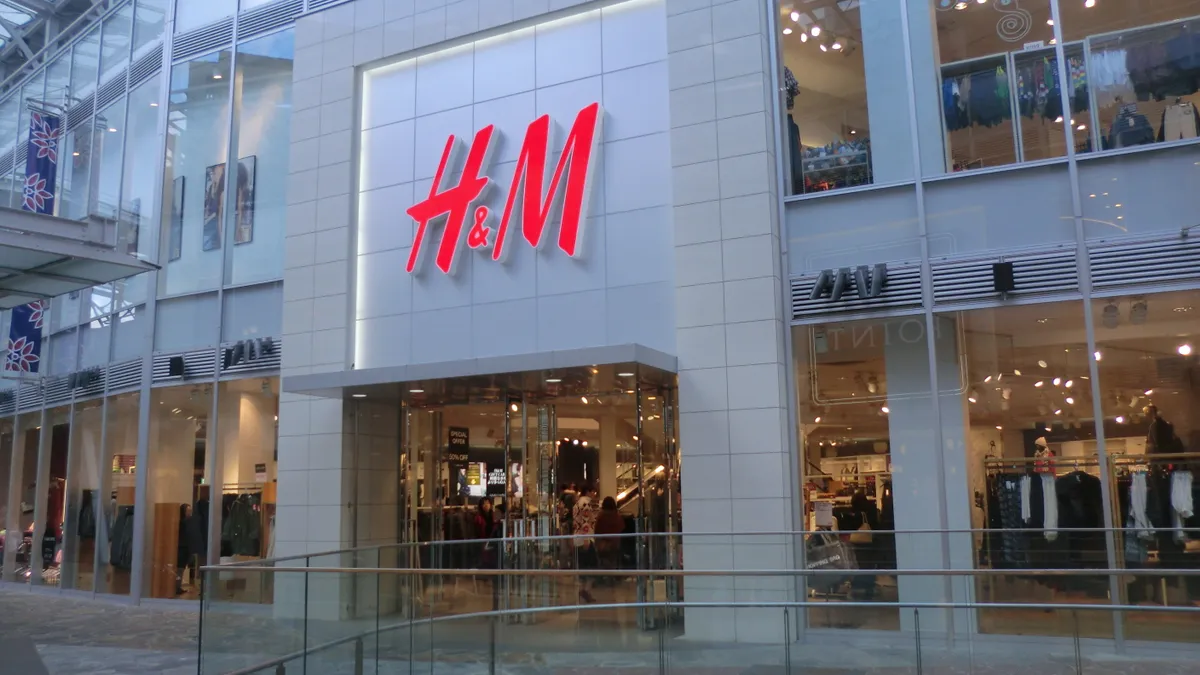Dive Brief:
-
After consultation with its large institutional shareholders, H&M has decided to publish the group’s sales per quarter instead of per month, starting after its June report, according to a company press release. Sales for the quarter will be published ahead of each interim report as the percentage change in local currencies and in Swedish kronor, as well as in absolute figures in Swedish kronor, both including and excluding the European value-added tax.
-
In addition to quarterly sales, the Swedish fast-fashion retailer will arrange “Capital Markets Days,” during which it will provide more in-depth information, the company said. CEO Karl-Johan Persson said in a statement that more information on the new program "will be provided at a later date." Otherwise, H&M will publish quarterly sales on the 15th of the month in which an interim report is presented; third quarter sales will be published on Sept. 15, and fourth quarter results will be published on Dec. 15, he said.
-
The apparel retailer also said that June sales, including VAT, rose 7% in local currencies compared to June last year; converted into Swedish kronor, sales rose 10%. The company’s stores numbered 4,517 globally on June 30, up from 4,095 stores a year ago.
Dive Insight:
Several retailers have dropped monthly reports over the years as too volatile a measure of sales performance, which Persson noted in his statement Monday.
“The reasoning is that a month is far too short a period over which to assess how sales are developing. In fact, a single month’s sales can actually be misleading, since calendar and weather effects – among other things – may significantly affect the outcome,” he said. “Instead sales development should be viewed over a longer period of time, such as over a season or a quarter. This is also the reason why the majority of companies in fashion retail currently report their sales quarterly rather than monthly.”
But H&M has taken flak from analysts for a lack of transparency, particularly because Persson hasn’t taken part in conference calls following reports, Retail Wire’s George Anderson noted. This is now being addressed through the “Capital Markets Days” initiative and by having Persson on the line more often during the company’s conference calls. He has only participated a few times in the past, according to the number of reports published by Seeking Alpha.
Not long ago H&M insisted that its store-focused approach was working, but now appears to be rising to the e-commerce challenge. This was underscored by the litany of new e-commerce sites in the company’s Q2 report: The flagship H&M brand has or will establish eight new online stores globally this year, with a site planned for India next year, and is now available in 41 markets and the new Arket banner announced in March will launch with 18 online markets this year. Expectations are for online sales to grow by at least 25% each year going forward.
Still, stores remain key and indeed the company sees them as helpful to e-commerce operations, stating, “Our global store network gives us a unique proximity to our customers, which is a great asset and advantage.” But its brick-and-mortar expansion — some 500 new stores are set to open this year — will be centered on growth markets, and some 100 will close. New and remodeled H&M stores will include “new forms of visual expression for a more inspiring in-store experience,” the company said last month.
Along with its brick-and-mortar footprint, the launch of new global brands is essential in the retailer’s growth strategy, the company said, noting that the value of the COS brand, which will reach revenues of around 10 billion krona ($1.19 billion) this year with profitability in line with that of the H&M brand, “already far exceeds the amount we invested in it.”












